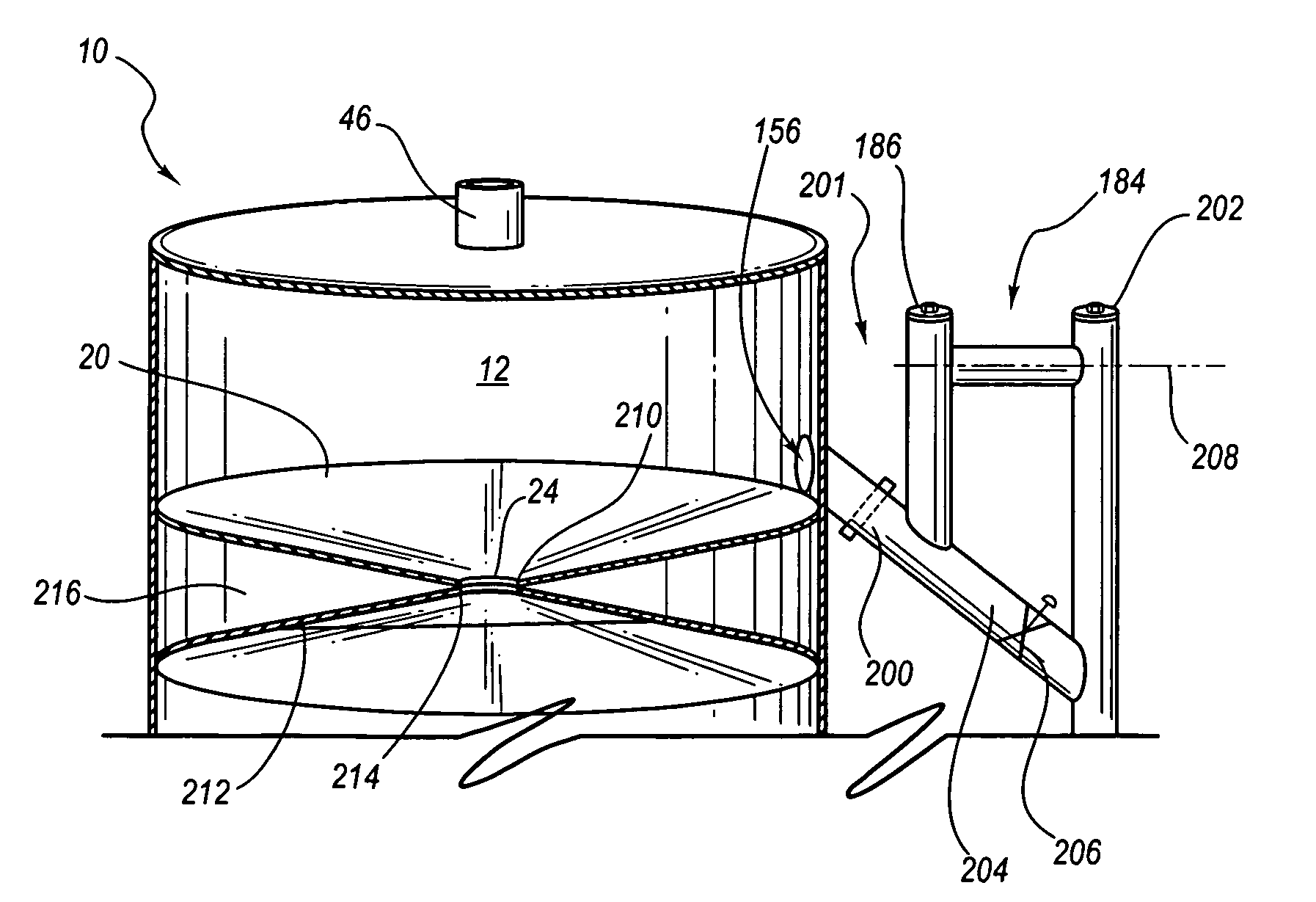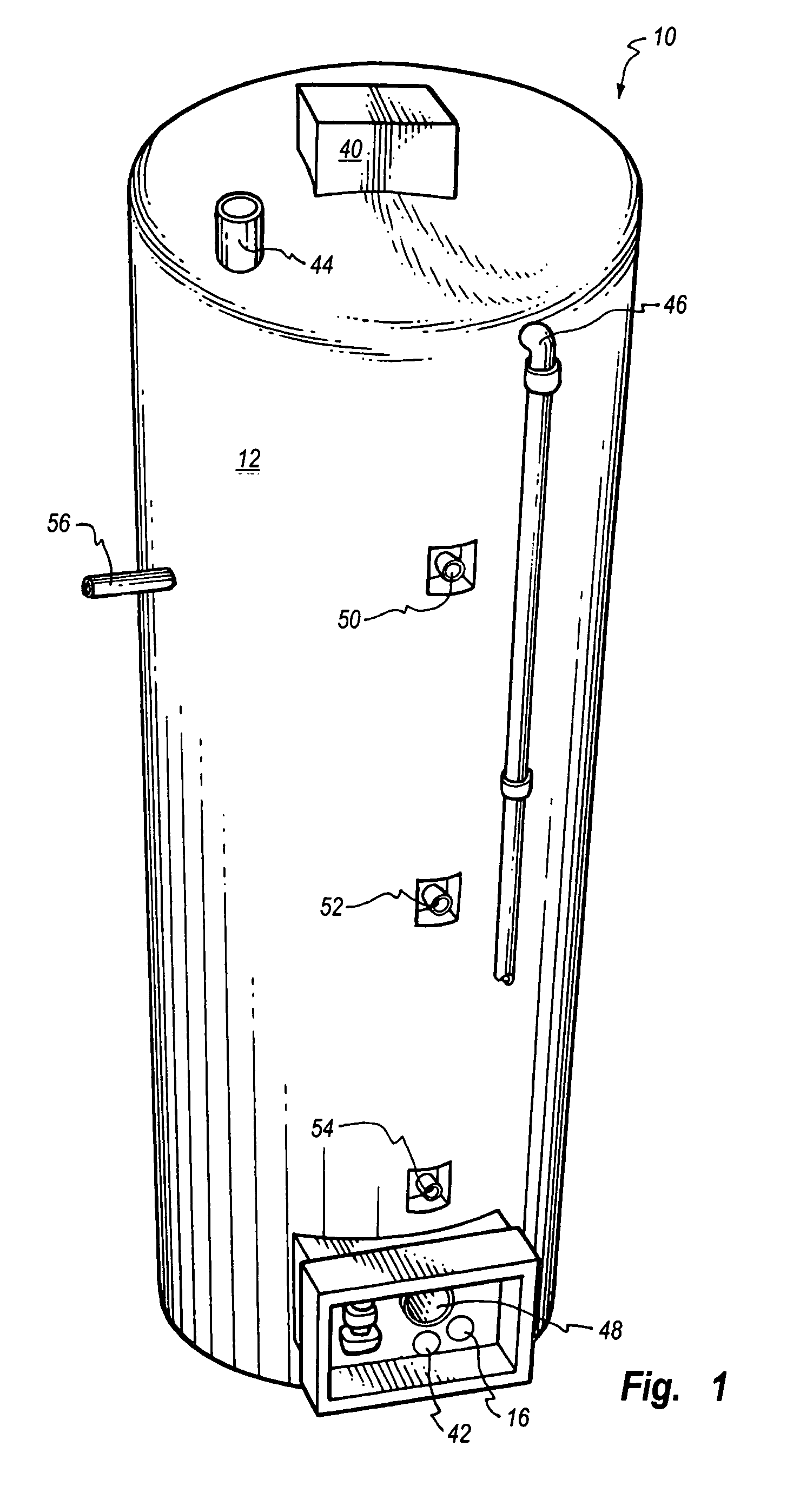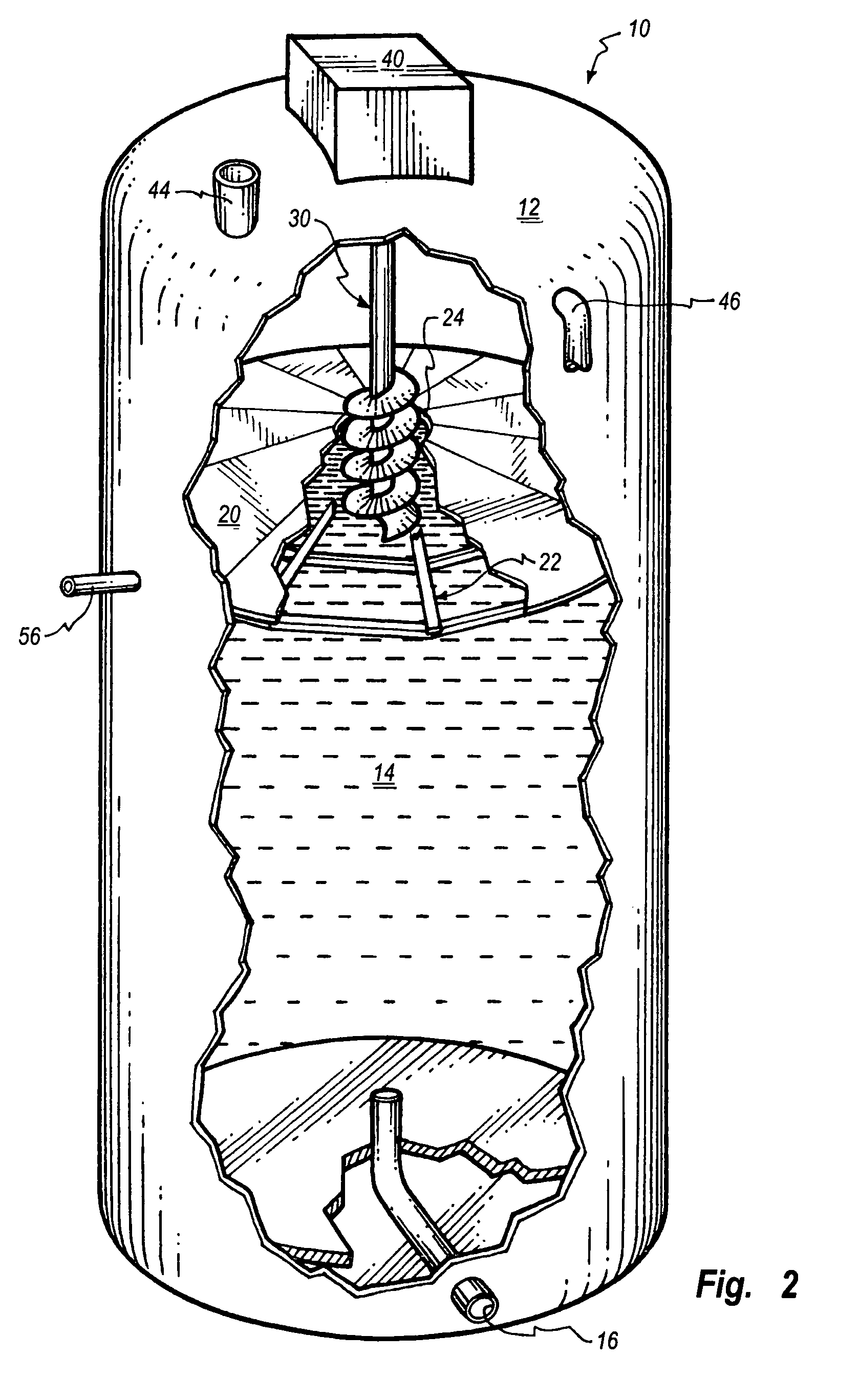Induced sludge bed anaerobic reactor
an anaerobic reactor and sludge bed technology, applied in the direction of liquid degasification, multi-stage water/sewage treatment, separation process, etc., can solve the problems of prior types of bioreactors, sludge blankets may become too thick or otherwise less effective to carry out anaerobic digestion,
- Summary
- Abstract
- Description
- Claims
- Application Information
AI Technical Summary
Benefits of technology
Problems solved by technology
Method used
Image
Examples
Embodiment Construction
[0034]The present invention relates to an anaerobic reactor 10 comprising an enclosure or vessel in which wastewater containing high concentrations of organic matter is introduced for treatment. An anaerobic reactor 10 according to the present invention is particularly applicable to wastewater generated through agricultural production and food processing.
[0035]In the anaerobic digestion process, bacteria convert carbon containing waste products, such as byproducts of farming, ranching, or food processing, into primarily biogas that is similar to natural gas. Suspended growth anaerobic digesters, such as lagoons or enclosed vessels, that are mixed and heated do not retain bacteria. Therefore, the rate of treatment depends on how fast the bacteria can grow.
[0036]An induced blanket bioreactor (IBR) quickly forms a sludge blanket or bed within the bioreactor. It is to be understood that the terms “sludge blanket” are synonymous and interchangeable with the terms “sludge bed.” A sludge b...
PUM
| Property | Measurement | Unit |
|---|---|---|
| diameter | aaaaa | aaaaa |
| outer diameter | aaaaa | aaaaa |
| perimeter | aaaaa | aaaaa |
Abstract
Description
Claims
Application Information
 Login to View More
Login to View More - R&D
- Intellectual Property
- Life Sciences
- Materials
- Tech Scout
- Unparalleled Data Quality
- Higher Quality Content
- 60% Fewer Hallucinations
Browse by: Latest US Patents, China's latest patents, Technical Efficacy Thesaurus, Application Domain, Technology Topic, Popular Technical Reports.
© 2025 PatSnap. All rights reserved.Legal|Privacy policy|Modern Slavery Act Transparency Statement|Sitemap|About US| Contact US: help@patsnap.com



